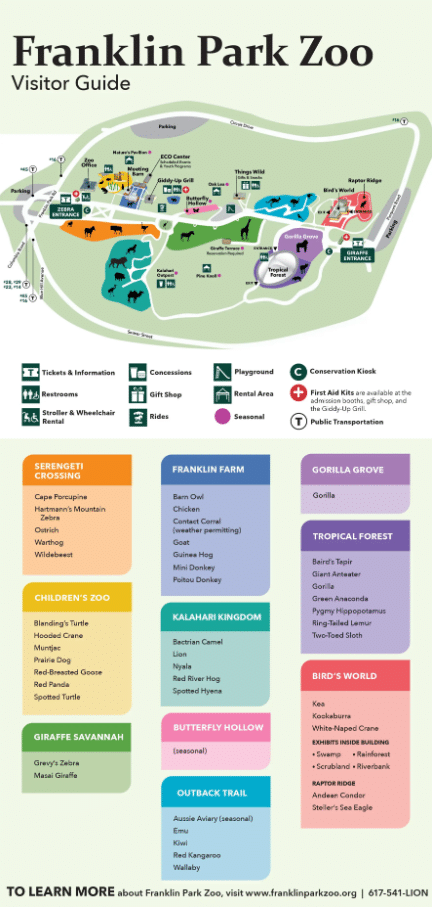Franklin Zoo Map and Brochure (2025 – 2020)
Location: Boston, Massachusetts
Years Active: 1912 – Active
Franklin Zoo isn’t your picture-perfect wildlife sanctuary. It’s old – like, founded in 1912 old. But that’s part of its charm. You’ll find some seriously cool animals here and a focus on teaching you about them and the challenges they face.
Want to beat the crowds? Go on a weekday. Weekends are packed, especially during warm weather. Their animal habitats range from awesome (check out the gorillas) to kind of outdated. It’s a mixed bag. But hey, they do cool things like the Amazon Rainforest Pavilion and Franklin Penguin Point.
Franklin Zoo throws fun events throughout the year, so check their website. Some are geared towards families, others towards adults. Did you know they have a festival celebrating Asian elephants?
Don’t be shocked if some areas look a little run-down. Zoos are expensive to maintain. But your visit helps fund conservation, and that’s important. Over a million people support the zoo every year, so they’re doing something right!
Franklin Zoo Map 2025
The most significant Franklin Zoo Map 2025 updates include the debut of the African Experience exhibit, which renovates Serengeti Crossing with a new savannah, moats, and a watering hole for improved animal viewing. The exhibit adds African penguins with an underwater viewing area and a replica rescue boat, and updates habitats for zebras, ostriches, and wildebeest.





